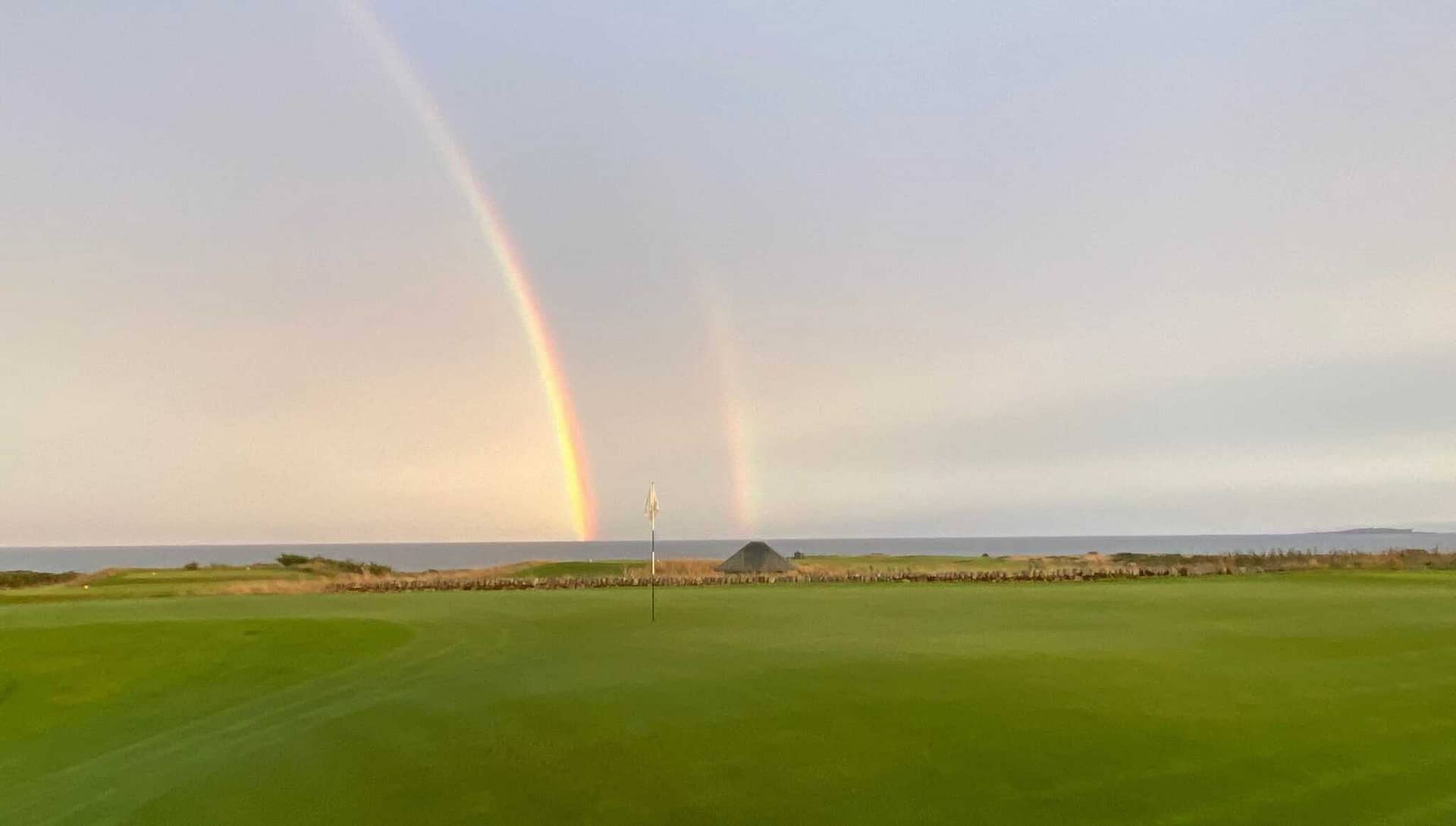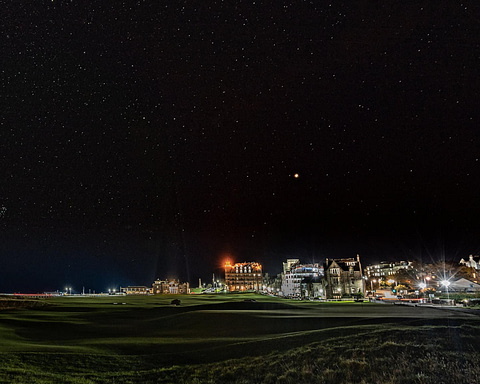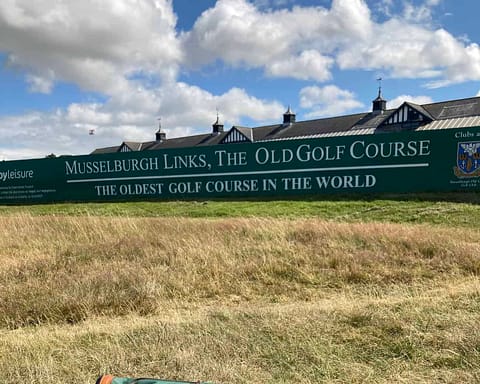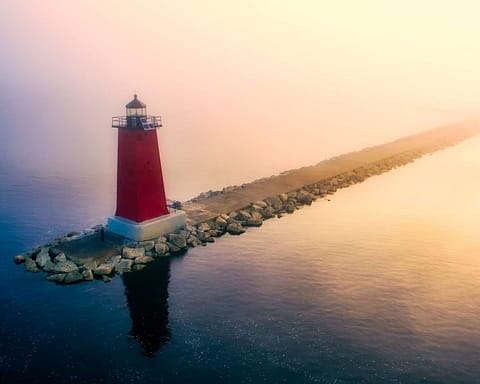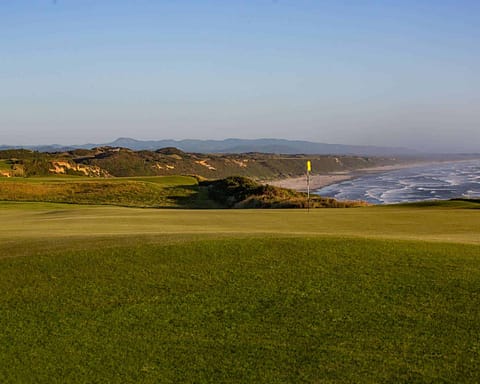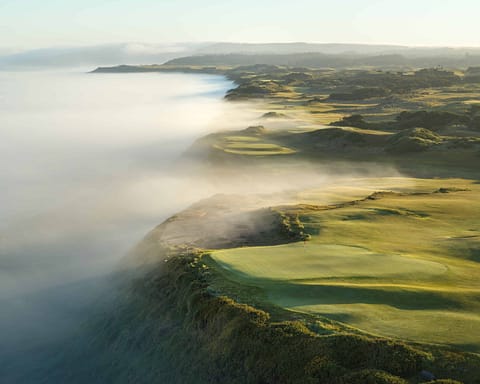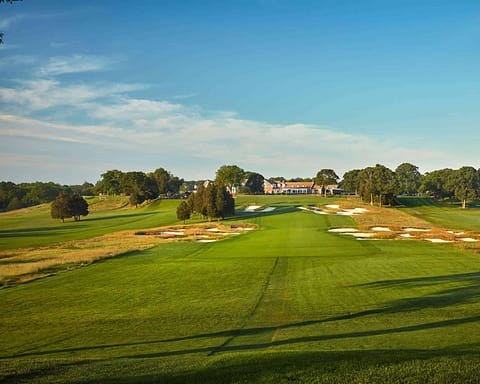It’s no surprise to find the Scots have more than 100 words for rain – several sprang immediately to mind as I arrived at Crail Golfing Society, the seventh oldest club on the planet.
It was a dreich morning, the darkest and dankest of starts to an autumnal day at the easternmost point of the Kingdom of Fife.
The rain was stoating, droplets bouncing an inch high, turning car park puddles into mini lochs, the only sign of life was the glow of the pro shop. But as daylight began to win its fight, it was easing to a smirr and it was then that Balcomie Links appeared before me for the first time.
Golf has been played in this part of Scotland for centuries – St Andrews is just 10 miles up the coast road – and on this particular patch of land since the 1850s. The Crail Golfing Society itself was ‘instituted upon 23rd February 1786’ at the village’s aptly named Golf Inn, according to what are claimed to be the oldest surviving minutes of any club in the world.

The early golfers played over eight holes at Sauchope Links on the edge of the settlement, before being ‘encouraged’ to move a couple of miles further east by disgruntled locals.
I’m being educated by the club’s manager David Roy, in front of a cavernous glass-fronted casement which dominates the entrance to a light and airy clubhouse and is crammed full of medals, bowls, trophies and ancient clubs.

The first one Roy points out is the Lindesay medal. “It was donated in 1830 and is one of the oldest medals in all golf,” he says. “It was won in 1855 by Allan Robertson in what could be argued was the first ever Open Championship.”
Robertson, a renowned ball and club maker from St Andrews, was the finest golfer of the era and it was his death in 1859 that led to the first Open Championship in 1860, with players at Prestwick on the west coast of Scotland wanting to decide who would succeed him as the ‘Champion Golfer’.
“That’s the Society’s first captain, William Ranken,” David points out. “To put into context how long ago this was, he fought for the British in the American Revolutionary War.
“He was part of a hard-drinking group of young men who saw the benefits of playing golf while taking in the sea-air the day after a session. They had a uniform of red military-style jackets and members would be fined if they played without wearing it. Most of their early games and fines revolved around alcohol and that helped the game evolve from awarding medals, which originated from the players’ military backgrounds, to bowls for the winners. And there would be some heady concoctions put in the bowl.”
One particular pot stands out – the Ranken-Todd bowl – which was presented to the Society at the opening of the Balcomie Links course in 1895. “It’s in memory of our first captain and Richard Todd, the tenant of Balcomie Farm, who used to keep the links fit for play,” explains David. “It’s an important annual competition, bringing together many of the oldest clubs of Fife for a hugely enjoyable day with lots of local rivalry.”
As we reach the end of the display cabinet, several hickory clubs catch the eye. “That one was used by Old Tom Morris to hit his first shot on Balcomie in 1895,” says David.
Old Tom, a four-time Open champion, laid out the first nine holes after declaring “better golfing turf could not be found than on Balcomie Links, where the soil is composed of sand”. He returned to add nine more holes in 1900.
“Remember, he had no mechanical diggers, just a spade and a wheelbarrow and a few helpers, so the holes follow the natural lie of the land,” adds David. “What you played out there today is pretty close to how it originally looked.”
How it looked on this morning, despite the bleakness of the weather, was pretty sensational; the elevated 1st tee allowing you to see the challenge heading your way.

While I was deciding whether to bow to my internal excitable child wanting to hit driver, or listen to my older, more boring head and nudge a 5-iron down the hill on the 320-yard opener, an army of greenstaff emerged from the gloom and scurried out across the course.
One came sauntering over. “Play off the whites, it’ll make for a more interesting round and I’ll make sure you’re teeing off from the prime spot on the 4th,” he said with a knowing look after learning I was a first-timer. I hit driver. Of course. The fairway is generous. It’s a hugely satisfying straight one, leaving a simple wedge over the cavernous bunker protecting the green.
The course really commands your attention over the next four holes. The whole of Fife is to your left. The 116-mile Fife Coastal Path is the only thing between you and North Sea to the right.
The distant hum of a lobster trawler chugging southwards, presumably back to one of the numerous quaint harbours of the picturesque East Neuk villages, adds to the gentle lapping of waves on the shore as I negotiate the par-five second and par-three third without drama.
So, to the 4th – Fluke Dub. An old Scottish term for the ‘flounder pool’ that dominates the inside of the dog-leg right and lies between the medal tee and safety. I could nudge 40 yards forward to the relative safety of the yellows, but then where’s the fun in that? Two balls dunked in the brine later and I’m trying to retain my sense of humour.

The 5th – Hell’s Hole. Almost a carbon copy. Just longer. You have to be brave. But just like the ships that strayed too close to danger, my ball crashes off a couple of rocks on its way to a salty ending. Card wrecked.
I could not feel more alive though. To play here is to wallow in the history of the place and those who have been before.
Many will be critical of the length, or lack thereof. There are six par-3s and it’s under 6,000 yards off the tips. But this is a course that was designed for hickories and gutties. And anyway, how many of us, even with our new-fangled clubs and balls, realistically overpower it?
As David later tells me, “visitors want to play Balcomie for its history, the members will tell you that Craighead is more of a challenge”.
Craighead, opened in 1998, is the 6,600-yard new kid on the Crail Golfing Society block. It was the first course outside of the United States to be designed by Gil Hanse, the man who dreamed up the Rio 2016 Olympics course.
Hanse won the project because of his desire to incorporate Danes Dyke – a 1,200-year-old wall built by the Vikings to keep out marauding Picts – in the routing of the course.
“It created a few blind situations but the Scots are less squeamish than we Americans are over blind shots,” he later said, while also revealing that he made frequent trips to the Old Course for inspiration. The revetted bunkers have been compared with Muirfield’s.
Craighead is for another day though.

I’m battling a freshening wind on Balcomie as I approach the first of back-to-back one-shotters that couldn’t be more different.
Brawn is required for the 215-yard 13th: uphill to a blind green, into a two-club breeze. A bogey feels like a birdie.
Precision is required for the 147-yard photogenic 14th : downhill to a green in full sight, with a two-club following wind. A bogey feels like a double. That view though.
The walk to the 15th tee takes you past a cave, which legend suggests, saw the killing of Constantine I, King of Alba, during a battle with the Danes more than 1,000 years ago. Those truths may have been stretched every bit as far as the tales of holed 50-footers that are being discussed in the clubhouse that sits atop a disused quarry and overlooks the final four holes, however.
The rain is back to stoating level as I stumble over the finish line with a three-putt on the par-3 18th. But even that cannot dampen my spirits and I head back into historic Crail, as those who started this journey more than 230 years ago would have done, for post-round refreshments at the Golf Inn.

